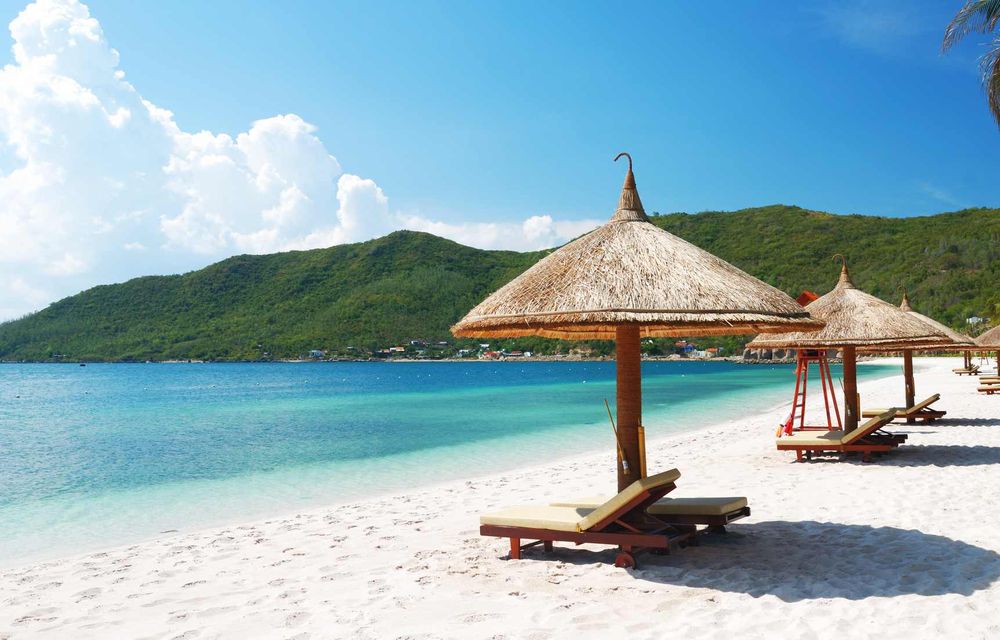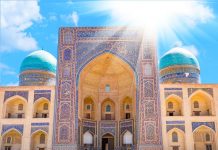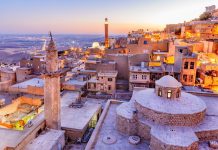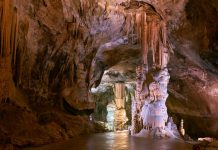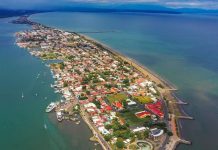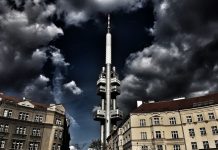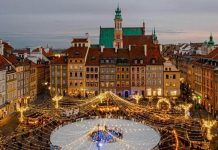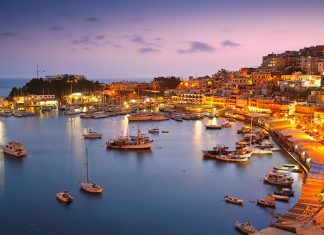This tourism area covers 5027 sq. miles with 200 miles of coastline. It makes up the Costa Rican Caribbean, which extends from the San Juan River to the Sixaola River along the Panamanian border. The city of Limón is located in the center of the tourist sector with a port and many tourism areas.
In the northern sector, the main attractions involve the green tortoises nesting grounds along the beaches of the Tortugero National Park and the Barra del Colorado National Wildlife Refuge. This area is known for sport fishing of sea bass, shad, and other species. The aforementioned is complemented by a river system that joins the port of Moín with Barra del Colorado, which is both an attraction, as well as the only means of transportation. Its offers are nature-based, particularly fauna observation, since it is known worldwide for its bird and turtle observing activities.
The area exhibits a unique mix of beach, natural resources and Afro-Caribbean culture in the surrounding areas like Cahuita, Puerto Viejo, and Gandoca-Manzanillo, which are located in the southern sector of the tourism area. Here there are high-quality beaches where you can find a mix of activities involving adventure and natural history, which uniquely complement the local culture, gastronomy, and music. The area is also known for its coral reefs, multi-colored sand beaches (black, yellow, and grey), costal vegetation, and medium-high forests.
Tourist Attractions
CALERO AND BRAVA ISLANDS
These islands are known as continental or fluvial islands, which, unlike other isolated marine territories; they are mainly surrounded by fresh water that is fed by the rivers that demarcates its flat and alluvial surface. Calero is the largest island of this type in Costa Rica and measures 97 sq. miles. Brava is the second largest that measures 27 sq. miles. Both are located next to each other in the far northern part of the Caribbean coast and both belong to the Barra del Colorado National Wildlife Refuge.
PLAYA BARRA DEL COLORADO
The northern Caribbean coastline is large and open, which makes for strong waves and dangerous marine currents for swimming, but its main attractions are the canals that run parallel to the beach and offers natural landscapes and an abundance of animal species that can be observed along the way. The Barra del Colorado Beach is demarcated in the north by the mouth of the Colorado River, and in the south by an estuary, which is good for hiking, flora and fauna observation, fishing, and watching the ocean. You can take boat trips through the interesting and scenic canals and lagoons. Colorado is a peaceful town of fisherman and farmers, and is split in the middle by a landing strip.
TORTUGERO CANALS – COLORADO
Due to its geological origin, the area where the Barra del Colorado Wildlife Refuge and the Tortugero National Park are located form an extensive plain filled with small rivers, canals, and beautiful lagoons that are all interlinked. The area is also one of the rainiest parts of the country (30 – 35 cubic inches), which explains its rich biodiversity. All these factors let visitors explore this extensive water system in boats, canoes, or in kayaks. This wonderful area with its peacefulness and lush nature makes it unique in the world. It is extremely relaxing to explore these canals and observe the exquisite greenness of its incredible tropical vegetation which is reflected in water surrounding it. One example of this is the Palma tributary that joins the Penitencia Lagoon in Tortugero with the Samay Lagoon in Barra del Colorado. This tributary is extremely beautiful, and is given its name from the many Yolillo Palms that are found along it.
PLAYA TORTUGERO
This beach is also very extensive with strong waves and tropical vegetation. It is a suitable place for hiking and observing the diversity of flora and fauna in the Tortugero National Park which is joined to a town with the same name, where the beach is. The coast is a place where four species of sea turtles nest: the Green Turtle, between April and August, is the most prevalent, followed by the Leatherback sea turtle, between February and July; the Hawksbill sea turtle, from April to October, and finally the Loggerhead sea turtle, from April to May.
Tortugero is a town where tourism is the principal form of income, along with fishing and subsistence farming. Therefore, there is an interesting mix of autonomous elements that defines itself, along with a variety of tourism services and facilities that shapes its present and future. These characteristics let tourists enjoy a variety of daytime and nighttime leisure activities: hiking and sunbathing on the beach, observing the biodiversity, excursions in boats or kayaks through the canals, socializing and spending time with the locals, enjoying typical Caribbean dishes or dancing to tropical or modern music.
CERRO TORTUGERO
This hill is located at the far end of a long fluvial peninsula, and runs north to south ending right before the town of Tortugero. This peninsula is consistently surrounded by the Tortugero lagoon on the east side, and the Penintencia lagoon on the west side. The Tortugero Hill measures almost 400 ft. high and is the only existing elevation throughout the coastal area. Therefore, from its peak you can see an incomparable view of the canals, the town, the coast, and the entire surrounding area. This area, comprising 61 acres, is completely covered by vegetation. To get there, you must arrange for a tour in Tortugero. The climb to the top takes around 30 minutes.
PARISIMINA RIVER MOUTH
Its riverbed below the Reventazón River, one of the largest in the country, joins the Parismina River. This river, particularly in the nearby areas or close to its mouth, has a big reputation for its abundance of fish. There are many fishing shops that offer all that you need for sport fishing in this area, which is bordered in the north with the southern edge of the Tortugero National Park. That’s why the mouth of the Caño Blanco is the starting point for many excursions to the national park.
PACUARE RIVER
This tropically lush river is world renowned among rafting enthusiasts or experts, meaning, navigating the rapids in rafts or kayaks. It is considered by many as one of the most beautiful rivers in the world for this type of sport. It is a level III and IV river. While rafting, you can admire the waterfalls and tributaries of the Pacuare, which is complemented by lush green vegetation that adds an incredible value to the experience.
COLORADO RIVER
This is a navigable river whose basin, which has an abundance of natural scenic beauty, is protected by the Barra del Colorado Wildlife Refuge. This river is internationally famous for its Shad fishing, as well as other species of fish (sea bass and mackerel).
PUERTO MOÍN
This is the launching point for boats through a network of canals that carry merchandise and passengers to Barras de Matina, Parismina, and Barra del Colorado and interlinks the many river towns located along this 70 mile stretch. This is a very scenic route that lets tourists enjoy contrasting and extremely beautiful scenery, particularly at the Jalova lagoon where the Tortugero National Park begins (the southern end).
PLAYA BONITA
Located 3 miles north of Limón. It is very easy to access and has very strong waves, which is ideal for surf enthusiasts. It is surrounded by lush tropical vegetation, and the coconut palms give it an especially scenic beauty. Due to its beauty and proximity to Limón, it is the preferred destination for tourists and locals alike to enjoy the ocean. There are many types of activities and events that happen at this beach like concerts and surf tournaments. Bonita Beach is deal for sunbathing, hiking, swimming (with caution), nature observing, playing volleyball on the beach, picnicking, family fun, etc.
LIMÓN
In order to get there in the least amount of time, it is preferable to take the Braulio Carrillo Highway. It is also possible to take the old highway, the Turrialba route, which is about 100 miles. History says that Christopher Columbus arrived to Costa Rica in 1502 to what is now known as the Port of Limón.
Limón is the most important port in the country because of its arrivals of imports and exports and its capacity to easily receive tourist cruise ships.
The historic area of the city has the characteristics of an old town and is currently undergoing renovation of its buildings and a walkway that goes from Vargas Park to the Market.
PUNTA UVA
Punta Uva is a wide, sandy, breakwater that runs northeast to the headland where Chiquita Beach ends. The coast runs curvy south to Manzanillo. There is a coral reef at the border of this point where you can go diving. Because of its curvy coast, it is ideal for hiking to Chiquita and Manzanillo Beaches.
PUERTO VARGAS
This beach is very beautiful and is also part of the Cahuita National Park. It runs several miles from the point with the same name to the mouth of the Carbón River. There are three distinct areas and each one is beautiful for its abundant vegetation. The first sector, running north to south, goes from the tip to the ledge known as Puerto Vargas.
The water here is crystal clear and calm because of its coral reef. The second stretch has darker sand and waves that are weak to moderate. It runs from Puerto Vargas to the beach entrance. The third stretch starts at this last point to the mouth of the Carbón River and its coastline has strong waves. This beach has been awarded the Ecological Blue Flag Award, which is given to beaches that are clean and safe.
PLAYA VIZCAYA
This beach is located along the roadway to Cahuita. It’s extensive, open sea and grayish sands. There is an abundance of coastal vegetation, specifically coconut palm trees. It is very popular among locals from Limón and national tourists who come with their families or friends. The mouth of the Vizcaya River is suitable for swimming as well.
THE BEACHES OF PUERTO VIEJO
This area is located on a point (or tip) that is made up primarily of coral reef shelves. That’s why there are various areas on this point that are not appropriate for swimming. However, there are other areas that have white and brown sandy beaches that are suitable for swimming. These places are named after some well known person or business in the area and are used as a reference point. Therefore, the beach located in front of the Manuel León commissary is known as Chino Beach, and the other located in front of the Stanford’s restaurant is named after the restaurant.
Both sites are fairly small, but very suitable for enjoying the beach. From this point, heading south is the famous “Salsa Brava,” at Punta Pirripli, which is one of the best places for surfing. There is international surfing competitions held here. Along these beaches you will also find businesses that cater to diving enthusiasts and organize dives around the coral reef.
PLAYA NEGRA (PUERTO VIEJO)
This beach runs from the town of Puerto Viejo to its northern entrance. It is known for its very dark sand, which is due to the high level of magnesium in the sand. It has a curvy coastline and its waves are moderate to strong. There is very little vegetation because the main highway runs along the beach.
This place is ideal for sunbathing as well as swimming and hiking northward where the Carbón River empties in to the ocean.
PLAYA NEGRA (CAHUITA)
This place is known for its dark sand and is located north of Cahuita. It is very long and has an abundance of tropical vegetation. There are different areas where you can find inlets, coral reef shelves, coves, and sandy beaches. Waves are moderate to strong. This beach is ideal for relaxing and watching the ocean, as well as exploring the area along the trails on foot, by horse, or mountain bike.
PLAYA BLANCA (CAHUITA)
This beach is part of the Cahuita National Park and is named after the color of its sand. It extends almost two miles, from its entrance to Punta Cahuita. The beach is narrow and the edge of the coast is steep with strong waves, therefore it isn’t recommended for swimming. Toward the middle and before arriving to the estuary of the Suaréz River is ideal for swimming. After crossing the estuary you can see the exposed coral reef strip, which turns the entire coastline into a huge lagoon. At the tip, the sand is very clear and the coral reef is very close, making it good for diving, or, you can continue another mile or so toward Puerto Vargas.
PLAYA MONA
In order to get to this beach, you need to hike a little over 2 and a half miles between Manzanillo and Punta Mona. The coastline is very irregular. Because of the forest and the surrounding scenery, this coastline is exceptionally pretty, particularly around Mona Point where you can see a small island completely covered by vegetation and adds to the coastal scenery. It is complemented by evergreen forests and patches of coral reefs that are ideal for diving.
PLAYA MANZANILLO
From the town of Manzanillo, this yellow-sand beach extends north, some 2 miles to Punta Uva. The waves are moderate to strong. The beach line itself is irregular and curvy. There is a lot of coastal vegetation as well as a large number of palm trees. This beach is ideal for hiking or horseback riding, as well as, sunbathing, swimming, or diving, of which, there are several areas facing the town and close to Punta Manzanillo. In the town of Manzanillo the street that connects all of the beaches south of Manzanillo ends, which measures about 7 miles from this point. Manzanillo offers many services: diving equipment rental, dolphin watching tours, or diving tours, etc.
PLAYA GANDOCA
Beyond the town of Punta Mona, this irregularly-shaped beach starts curvy then opens up in to a regular beach up to Gandoca. The beach sand here is grayish and the waves are strong. From Gandoca to the south the beach runs up to the opening of the Sixaola River, which borders Panama. This last coastal stretch about 5 miles long and is great for hiking and observing the rich biodiversity of its ecosystems. Gandoca is also ideal for sea turtle nesting observation between April and August. Walking from Gandoca toward Manzanillo takes around three hours. This beach has been awarded the Ecological Blue Flag Award, which is an award given to those beaches that are kept clean and safe.
PLAYA COCLES
This beach is very long and wide. The waves are moderate to strong. Toward the north and in front of Punta Pirriplí, there is a beautiful small rocky islet with the same name that adds a special something to this area of the coast that has very few islands.
This beach is perfect for activities such as: sunbathing, swimming, hiking, and horseback riding, volleyball, beach soccer, and others. At Punta Cocles there is a small coral reef. All along the beach are many services for tourists including surfboard and bicycle rental shops. In Puerto Viejo you can rent horses or motorcycles to explore this, and many other beaches located to the south.
PLAYA CHIQUITA
This is a very long beach, bordered by Punta Cocles to the north and Punta Uva to the south, with strong waves. To the south, it has a headland from which it is possible to observe small coral reef colonies. Its white sand is due to the remains of the coral reefs. This beach is rich in vegetation along its coast which complements perfectly with it sun and beach activities, as well as with the diving because of its crystal clear waters.

